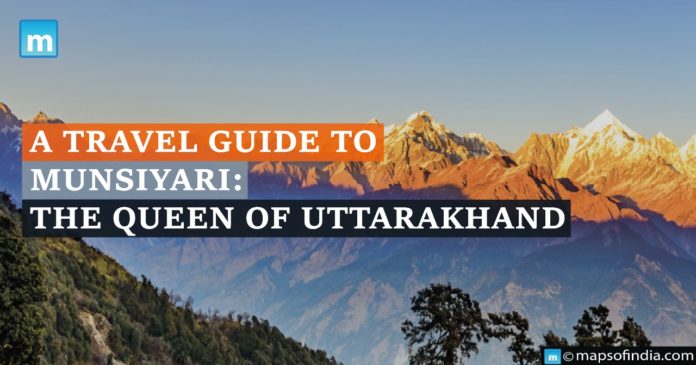If you want to see the natural beauty of Uttarakhand, then you should go on a trip to the lesser-known and remote areas in the beautiful city of Munsiyari. Situated at one end of Pithoragarh district, Munsiyari is one such place where you reach the beautiful lap of nature. The ranges of the Himalayas are visible from here so close that you become enamoured of their beauty.
The Johar Valley along the Indo-Tibetan border of Uttarakhand begins with Munsiyari, from where there was once a rich tradition of trade between Indo-Tibetan. The beauty of waterfalls, temples, and lofty peaks can make a trip to Munsiyari memorable.
- Birthi falls
Before reaching Munsiyari, you can not stop to see a huge waterfall right on the side of the road. Located at about thirty-five kilometres from Munsiyari, this waterfall is about 150 meters high. When the water falling from height is hit by a strong wind, it seems like the stream of water is flowing at a plodding speed. When the waterfall is at its peak, you can feel innumerable splashes of water falling on your body even several meters away. Repelling has also been done on this waterfall present in Talla Johar. For the last few years, this place is also known for adventure tourism.
- Nanda Devi Temple
You can reach this serene and beautiful place by walking for about 3 kilometres from Munsiyari by road and then about two hundred meters on foot.
This temple of Nanda Devi is considered one of the oldest temples in Uttarakhand.
This temple, built at an altitude of 7500 feet above sea level, has religious significance, but this place is also spectacular in terms of natural beauty. That’s why tourists visiting Munsiyari do not forget to come here. The five peaks of Panchachuli on the side of the temple add to its charm.
- Khalia Top
If you are coming to Munsiyari, then definitely go to Khalia Top. After a six km trek, you reach an altitude of 3500 meters from where you can see the snowline.
You can also get the sight of local birds like Gurd, Kakad, and Bharal on the way.
Apart from this, Munsiyari is also the native abode of the Shouka tribe of the High Himalayas. From here, many tracks begin in and around the Johar Valley, the ancestral home of this tribe. Hence Munsiyari is a well-known name among trekkers.
Apart from Milam and Ralam glacier trek, the first stop of Nanda Devi Basecamp and Namik glacier trek is Munsiyari.
- Thamri Kund
At about seven kilometres from Munsiyari, a walk from the main road takes you to a lake, passing through thick forests of birch and deodar. This lake is called Thamari Kund. This lake, built amidst dense forest, is entirely natural, and there is a particular belief among the local people about it. It is said that when there is no rain, Indra Dev is pleased by coming and worshipping here. It is a pleasant experience to reach this lake apart from the beliefs. In the forest, you can also see many species of birds, including the state bird Monal. It is also not uncommon for you to encounter a herd of deer here.
How to reach?
To go to Munsiyari by rail, you have to come to Kathgodam, and then you can take a bus or cab from there. Direct buses with simple facilities also run from Delhi to here. It will be more convenient to come here in your car, taxi or shared cab.
When to go?
You can come here anytime from March to October. The roads are not very good, so it is not safe to go here in the rainy season. Due to being at an altitude of about twenty-three hundred meters above sea level, there is a lot of snowfall here in winter.





